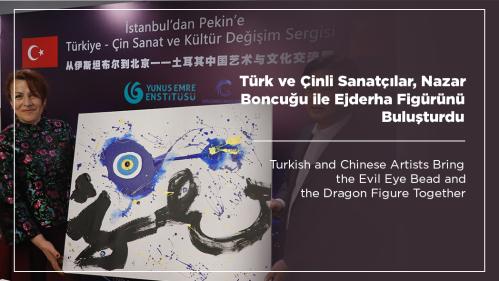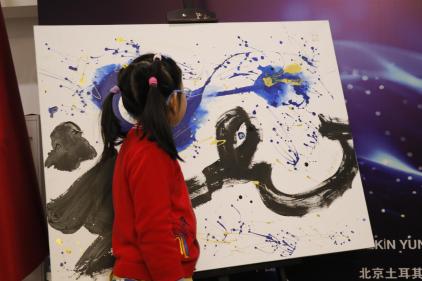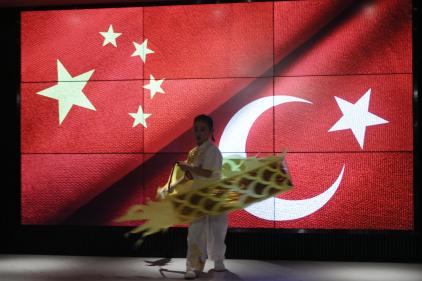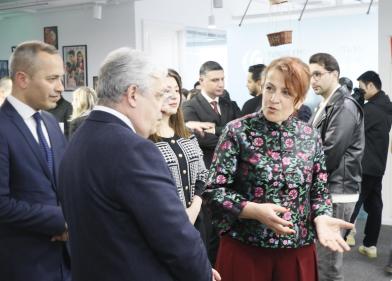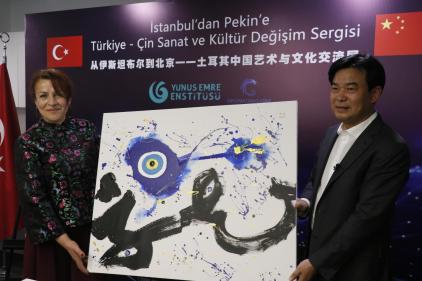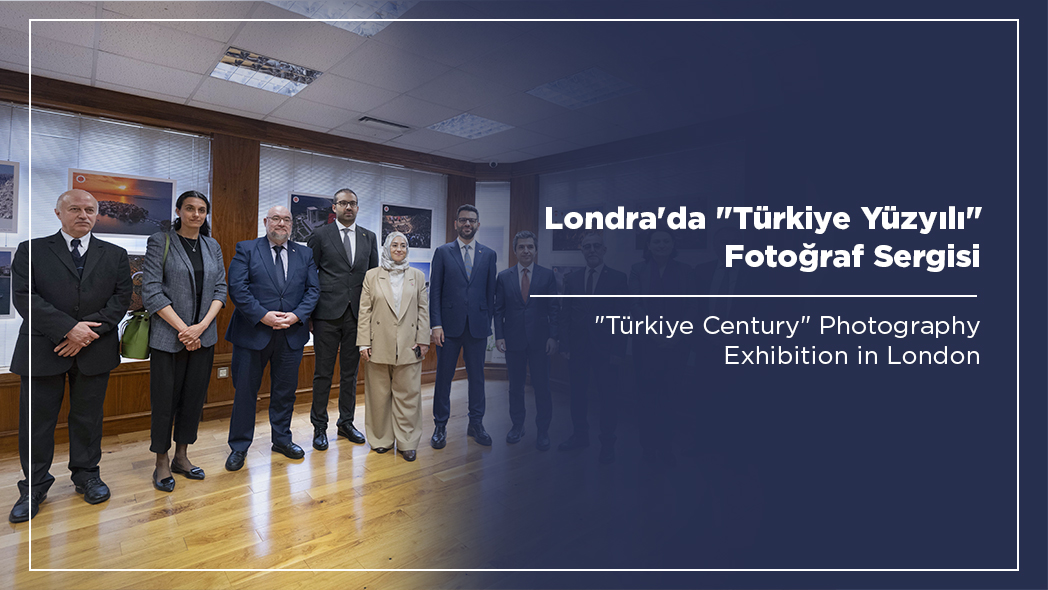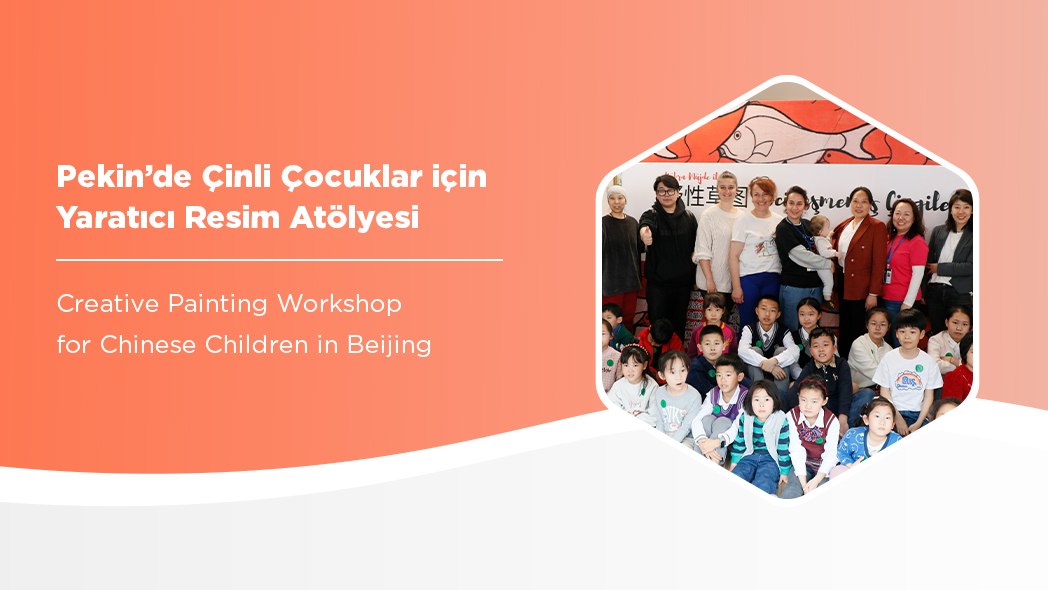Turkish and Chinese Artists Brought the Evil Eye Bead and the Dragon Figure Together
Turkish and Chinese artists opened a joint art exhibition in Beijing, the capital of China, featuring works that bring together the cultural motifs of the two countries.
The works of Turkish artist Ayşe Emel Gümüş and Chinese Şia Pıngçıng came together in the exhibition "From Istanbul to Beijing: Türkiye-China Culture and Art Exchange".
In the exhibition opened at Beijing Yunus Emre Institute, Shia's paintings, which exemplify classical Chinese calligraphy, and Gümüş's compositions focusing on intercultural interactions were presented to art lovers.
Speaking at the opening of the exhibition, Türkiye's Ambassador to Beijing İsmail Hakkı Musa said that the Ancient Silk Road was the main route of merchants traveling from China to the West through the territory of the Ottoman Empire, and that centuries-old trade on this route resulted in the close cultural interaction between the Turkish and Chinese people.
Stating that the structure of Ottoman rifles, how they were used and their shooting styles were explained in detail in the weapons catalog prepared by the Chinese statesman Cao Şıcın to be presented to the Chinese Emperor in 1598, "This is actually what we call 'technology transfer' today. Turkey and China started advanced cooperation such as technology transfer centuries ago." Musa said.
Pointing out that the interaction between cultures is important for the development of relations between countries, Musa said, "Culture is the soul of civilization. Let's capture this spirit together." he said.
"Chinese dragon meets evil eye bead"
Turkish artist Ayşe Emel Gümüş explained that China entered the Year of the Dragon according to the traditional 12-animal lunar calendar, and that they chose the theme "Chinese dragon meets evil eye bead" for this exhibition, which brings together the cultural motifs of the two countries.
Commenting on the painting he and Shia made for the exhibition, which featured the dragon character and the evil eye bead motif together, Gümüş used the following expressions: "Since our Chinese friend is a calligraphy artist, he drew the dragon character in Chinese writing on the painting. So I interpreted and painted the evil eye bead motif in a way that would create harmony with the calligraphy."
Chinese artist Shia also pointed out that there were different calligraphy styles in Chinese history, and that he chose the style of the Song Dynasty in the paintings he prepared for the exhibition because the dragon character in this style has the most pictorial similarity with the dragon figure.
Pointing out that Türliye and China are two friendly countries, even though they are geographically far away, and that the harmony between text and abstract figure and the dialogue between colors and forms in the painting they made with Gümüş aesthetically revived the ties between the two cultures, Şia made the following assessment: "Even though there are distances between us, Türkite and China are connected by mountains, rivers and oceans. The friendship of the two countries will live on for a long time."
"Let's get acquiented"
Ali Oğuzhan Yüksel, Director of Beijing Yunus Emre Turkish Cultural Center, which organized the event, stated that the center started its operations in 2021 and that its aim is to promote Turkish culture in China, and addressed the Chinese audience as follows:
"Yunus Emre, from whom we take our name, is an important Turkish poet and mystic who lived in the 13th and 14th centuries. We would like to call you from here with his verses: 'Let's get acquainted / Let's make it easy / Let's love, let's be loved / The world will not be left to anyone.'"
Yüksel hoped that the event would lead to new acquaintances.
At the event, a Kung-fu team consisting of Chinese children performed a performance combining dragon and lion dances with martial arts.
In addition, a Turkish music concert was held and a workshop was held where the artists in the exhibition explained their painting and calligraphy techniques.
"From Istanbul to Beijing: Türkiye-China Culture and Art Exchange" Exhibition can be visited at Beijing Yunus EmreTürk Cultural Center on March, 10-12.

